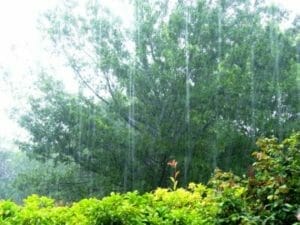As colder, harsher weather approaches, are your trees ready for the coming storms? Even a seemingly harmles s windy day can make a weak tree a hazard to your home and family.
s windy day can make a weak tree a hazard to your home and family.
When it comes to protecting your trees from severe weather, preparation is key. While we can’t predict when a storm will strike, we can prepare your trees to handle it. At Urban Forest Pro, we recommend taking proactive measures to safeguard your trees and your home from potential storm damage.
Why Tree Maintenance Matters Before a Storm
The most common way to prepare your trees for a storm is pruning. By having an arborist inspect your trees and remove weak or overhanging branches, you can reduce the risk of tree failure during high winds. Regular tree maintenance is especially critical in the fall, when strong winter storms are more likely to occur.
Pruning before the storm season allows trees time to heal and adapt to the changes. Waiting until summer for pruning can sometimes be a better option, as the tree has time to adjust and recover before harsh conditions arrive.
Practical Tree Care Tips for Fall and Winter
Given that bare trees are easier to inspect, fall and winter are definitely good times to keep an eye on the condition of your trees. Here are some tips to keep you safe:
- Remove dead limbs. The first and easiest step to take is to identify and remove dead limbs. Dead or dying limbs are susceptible to wind, and it may not take as much as you think to bring them down. The cold and harsher weather in the fall and winter can also weaken a tree and its branches. Mulching your trees is a bit like giving them a warm blanket, as it can significantly warm the soil’s surface and protect roots from extreme temperatures.
- Watch for leaning trees. Even without the threat of high winds, if you have a tree with limbs leaning on or towards your home or areas in the yard where you and your family congregate, they are a hazard that needs to be addressed. If you are unsure about how strong your tree is, we can help you determine what, if anything, needs to be done.
- Watch trees encroaching on power lines. Trees are involved in the vast majority of power outages here in Portland. To lower your risk for an outage, it’s important to make sure your trees stay a safe distance from power lines. It’s also important to keep trees from encroaching on your home. Recommendations vary, but keeping limbs at least six feet from your home and power lines is a good idea. Always leave tree trimming around power lines to the professionals, but don’t procrastinate, as it can lead to power outages, surges and even fires. During a storm or severe weather, fallen trees or branches can pose a significant risk to power lines, leading to power outages and other hazards. If you notice a fallen tree or branch on a wire, it’s important to take appropriate measures immediately. This includes calling your electric company as well as a qualified arborist, who can assess the situation and determine the best course of action.
High-Risk Trees
Certain trees are more prone to storm damage than others. For example, Douglas firs, which can grow over 200 feet tall, are particularly vulnerable during strong winds. At Urban Forest Pro, we focus on providing top-tier pruning services for these taller trees. We take pride in not receiving numerous calls for fallen trees from clients who have had their Douglas firs pruned with us.
Common Misconceptions About Tree Safety
Many homeowners believe that trees close to their house are the most likely to cause damage, but this isn’t always the case. It’s not just about proximity, overhanging branches and weak limbs can cause significant damage during storms. That’s why it’s important to have a professional arborist assess the tree’s health, no matter where it’s located on your property.
How We Help You Plan for Storm Season
At Urban Forest Pro, we encourage homeowners to have an arborist walk through their property to identify potential risks. Even if your budget limits your ability to make immediate changes, simply knowing what could go wrong allows you to plan ahead and prioritize future work.
When preparing for a storm, we also look at external factors like landscaping changes or soil saturation, as these can affect the stability of your trees. Heavy water pooling in your yard due to drainage issues can compromise root stability, making your trees more susceptible to wind damage.
Ready to Protect Your Trees? Contact Us Today
At Urban Forest Pro, we have extensive experience in safely removing fallen branches and trees from a variety of precarious situations, including tree trimming around power lines. We’re here to help you navigate any emergency situation and provide expert guidance on how to keep your trees and property safe.